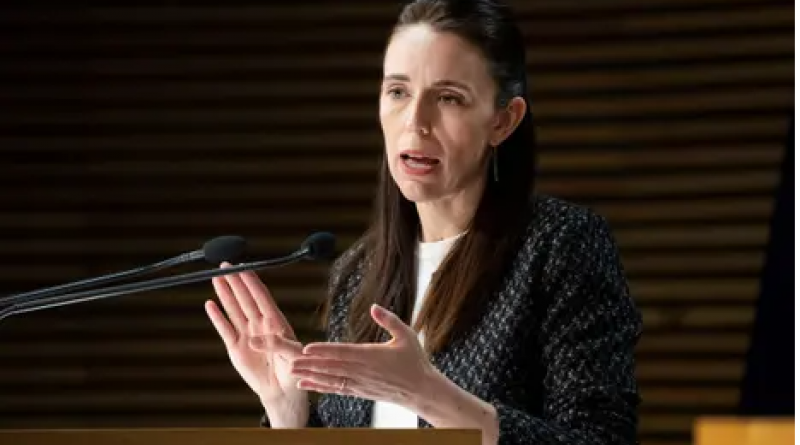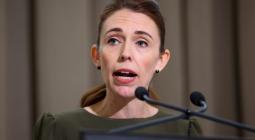New Zealand plan to halve greenhouse gas emissions criticised as an ‘accounting trick’

Experts say commitment to cut emissions by 2030 is not ambitious enough and relies too heavily on carbon offsets
Climate change experts have warned that New Zealand has employed “accounting tricks” to create a target for greenhouse gas emissions cuts that looks far more ambitious than it really is.
On Sunday the country pledged to halve its emissions by 2030 aspart of the Paris agreement to limit global warming to 1.5C. The announcement was made on the eve of the United Nations Cop26 climate conference.
The previous target, known as a nationally determined contribution (NDC), was to reduce emissions by an average of 30% from 2005 levels, over the 2021-2030 period.
The updated NDC, has a target of reducing net emissions by 50% below the gross 2005 levels come 2030, or to reduce average annual net emissions over the next decade to 41% below 2005 gross levels.
The target roughly aligns with commitments by the European Union, Newsroom reports, the primary difference being that the European Union aims to reduce most of its emissions within its own borders. New Zealand, on the other hand, expects that less than a third of its emissions will be reduced onshore.
While New Zealand’s share of global greenhouse gas emissions is small, its gross emissions per capita are high and it is one of the world’s worst performers on emission increases. Emissions in New Zealand rose 57% between 1990 and 2018 – the second-greatest increase of all industrialised countries. Earlier this year, data showed New Zealand’s emissions had increased by 2% in 2018-19.
The Climate Action Tracker has given the country a “highly insufficient” rating, pointing out that despite net-zero emissions by 2050 being enshrined in law, the government’s policies focus too heavily on offsetting carbon overseas and through forestry, rather than addressing the root causes such as agriculture.
Bill Hare, from Climate Analytics, a partner organisation to Climate Action Tracker said New Zealand’s latest announcement employs “various accounting tricks”.
“The headline target that the government has put forward as a 50% reduction from 2005 levels of emissions is what the general public hears, however the government has taken a number of unusual accounting approaches that, when analysed, indicate that the real emission reductions achieved compared to 2005 levels of net emissions is only 22-23%,” he said.
“The allowed net emissions in 2030 are calculated as a percentage of gross emissions in 2005, essentially comparing apples and oranges. Gross emissions in 2005 was significantly higher than 2005 emissions.”
Global industry campaign manager at Oil Change International, David Tong, said it was similar to the difference between looking at gross income, and pay after tax.
“What’s been compared is a total emissions in 2005, to our total emissions, if we achieve this target, in 2030, less the sequestration from forestry and other carbon sequestration within New Zealand. So those are two different data sets.”
Part of the problem, is that the government is using Kyoto Protocol accounting rules, which have become less common, rather than the International Panel on Climate Change data method.
“If you want to compare our targets to what is necessary for 1.5C, as both the prime minister and minister James Shaw have done, then it’s really important that you use the same numbers as the world’s top scientists,” he said.
Professor Bronwyn Hayward, from the University of Canterbury and an author for the IPCC report, said Climate Action Tracker has long argued that if New Zealand’s commitments are to be consistent with limiting warming to 1.5˚C, the country should set a 2030 target to reduce gross emissions by at least 44%.
“What we have done instead is to set an estimated net target of 41%. There will now be political debate about whether this meets the 1.5 target.”
Lawyers for Climate Action NZ Inc spokesperson, James Every-Palmer QC, said that while the target sounded good and is a significant improvement on the current NDC, it is not as good as it sounds.
“The climate does not care about our clever accounting choices, it cares about the level of net emissions. And our failure to walk-the-talk will be apparent to our trading partners in our United Nations framework convention on climate change reporting.”
The climate minister James Shaw said while the first priority was to reduce emissions domestically, the country will also boost its emissions reductions through buying overseas carbon credits.
“We will then add to this by working to reduce emissions in other parts of the world. The priority here will be to support developing countries in the Asia-Pacific to meet their sustainable development goals.
But Professor Ralph Sims, from Massey University said: “forest sinks only buy us time, and buying international credits is yet to be agreed under Paris COP rules and remains questionable with double-counting a risk”.
Forest and Bird’s chief executive Kevin Hague said the government was relying too heavily on other countries to do the work.
“Unless the government delivers a much better plan to cut emissions that what we have seen so far this target will be mostly met by buying carbon credits from other countries. That’s a government subsidy to polluters like the dairy industry.”
With the target set, and the country’s emissions reduction plan due in May 2022, the most important thing now was for action to back up the ambitions, Hayward said.
“It’s meeting them that is the big challenge as we work to make these cuts to our emissions real in all sectors of the economy, and to dramatically increase our efforts to protect people and businesses from increasingly chaotic climate futures.”
1 November 2021
The Guardian




